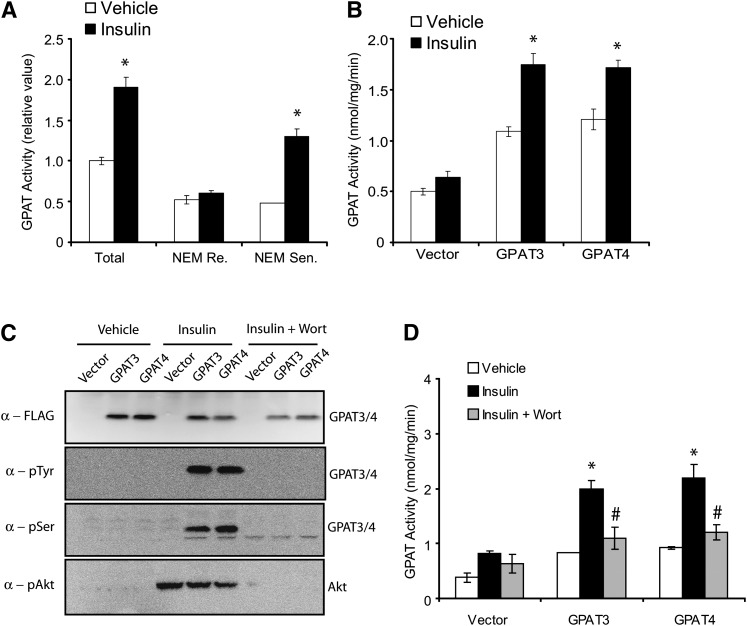Fig. 5.
Insulin stimulated phosphorylation of GPAT3 and GPAT4 and enhanced their activities. A: Insulin treatment increased NEM-sensitive (Sen) microsomal, but not NEM-resistant (Re) mitochondrial GPAT activity in 3T3-L1 adipocytes. Cells were starved (serum removed from medium) for 18 h before insulin addition. *P < 0.05 versus vehicle. B: Insulin treatment enhanced GPAT activity of HepG2 cells transiently transfected with GPAT3 or GPAT4. *P < 0.05 versus vehicle. C: Insulin stimulated wortmannin (Wort)-sensitive phosphorylation of GPAT3 and GPAT4. Lysates prepared from HepG2 cells transiently transfected with FLAG-tagged GPAT3 or GPAT4 cDNA were immunoprecipitated with anti-FLAG antibody and subjected to Western analysis by phosphospecific antibodies to Tyr or Ser residues. The membrane was also blotted with anti-pAkt antibody to monitor the general insulin-stimulated signaling cascades. D: Wortmannin treatment abolished the insulin-stimulated increase in GPAT activity in HepG2 cells overexpressing GPAT3 or GPAT4. *P < 0.05 versus vehicle; #P < 0.05 versus insulin. GPAT activity was measured with G3P and [14C]palmitoyl-CoA as substrates. The vehicle used is serum-free medium (A and B) or 0.1% DMSO in serum-free medium (C and D). All data are expressed as mean ± SD (n = 3–4). GPAT, acyl-CoA:glycerol-3-phosphate acyltransferase; Ser, Serine; Tyr, Tyrosin.

